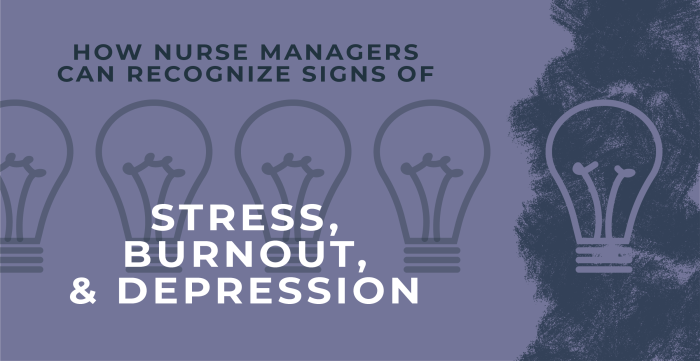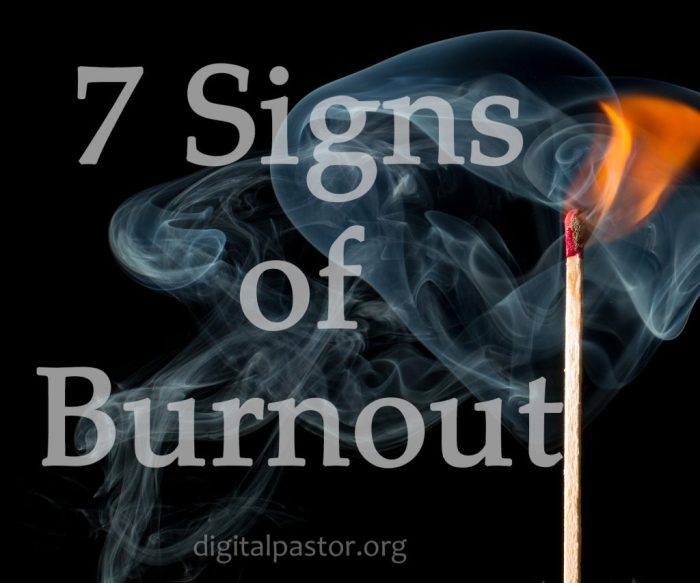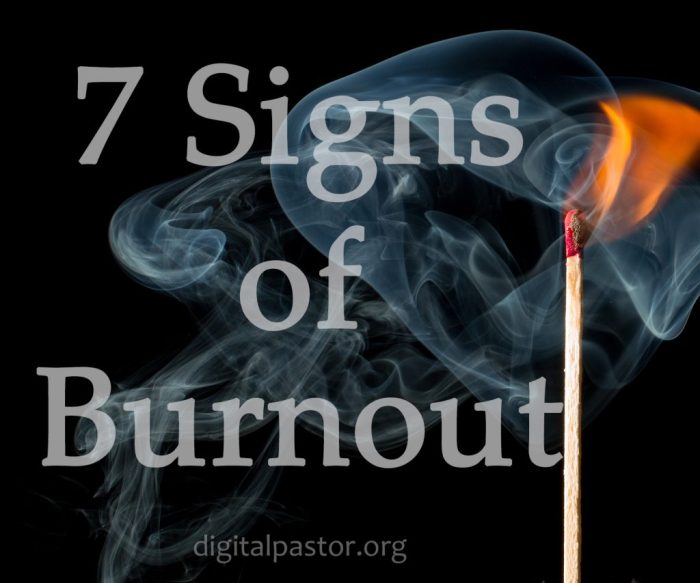Signs you have burnout are often subtle, appearing as seemingly minor annoyances or changes in your daily routine. This post dives deep into recognizing the various signs, from physical symptoms to emotional responses, helping you understand if you’re experiencing burnout and what steps you can take to address it.
Burnout is a real issue, and it’s crucial to be aware of the different signs and symptoms. This comprehensive guide provides a clear overview of burnout, distinguishing it from other conditions like depression and anxiety. It explores the stages of burnout, its impact on your daily life, and offers actionable strategies for preventing and overcoming it.
Identifying Symptoms of Burnout

Burnout is a state of emotional, physical, and mental exhaustion caused by prolonged or excessive stress. Recognizing the symptoms is crucial for early intervention and preventing further deterioration. Understanding the various manifestations, from subtle physical changes to pronounced emotional responses, can help individuals and support systems identify the need for help.
Physical Symptoms of Burnout
Prolonged stress, a hallmark of burnout, often manifests physically. These symptoms can range from minor discomfort to more serious health concerns. Ignoring these physical cues can lead to more significant health issues.
- Muscle tension and headaches: Chronic stress can tighten muscles, leading to persistent headaches, back pain, and jaw clenching. This physical tension is a common response to the constant pressure and demands of daily life.
- Sleep disturbances: Insomnia, excessive sleeping, or erratic sleep patterns are frequently associated with burnout. The mind races with anxieties and worries, disrupting the natural sleep-wake cycle.
- Digestive problems: Stress can significantly impact the digestive system, leading to stomach aches, nausea, or changes in bowel habits. The body’s response to stress often involves diverting resources from non-essential functions, including digestion.
- Weakened immune system: Chronic stress compromises the immune system’s ability to fight off infections. This can lead to increased susceptibility to colds, flu, or other illnesses.
- Fatigue and low energy: Feeling persistently tired and lacking energy is a hallmark symptom of burnout. The body and mind are depleted from the sustained effort and lack of adequate recovery time.
Psychological Manifestations of Burnout
Burnout often manifests in psychological ways, impacting cognitive function and emotional regulation. These changes can significantly impact daily life and relationships.
- Decreased concentration and focus: Burnout can impair cognitive function, making it challenging to concentrate on tasks or maintain focus. Sustained stress depletes mental resources, making it difficult to process information effectively.
- Memory problems: Difficulty recalling information or remembering details is a common psychological manifestation of burnout. The constant pressure and mental exhaustion can affect memory consolidation and retrieval.
- Difficulty making decisions: Burnout can lead to a sense of overwhelm and indecisiveness. The mental fatigue can make it hard to evaluate options and make sound choices.
- Feeling emotionally numb: A lack of emotional responsiveness can be a sign of burnout. Individuals may feel detached from their emotions, experiencing a sense of emptiness or apathy.
- Increased irritability and frustration: Stress and exhaustion can heighten irritability and frustration levels, leading to increased conflict and strained relationships.
Emotional Responses Indicating Burnout
Emotional responses to burnout can range from feelings of sadness and hopelessness to anger and resentment. These emotional shifts are often significant indicators of the need for intervention.
- Feeling overwhelmed and helpless: A sense of being trapped and unable to cope with demands is a critical emotional sign of burnout. The individual may feel unable to manage their responsibilities or find solutions.
- Loss of motivation and interest: Individuals experiencing burnout may lose interest in activities they once enjoyed. The lack of enthusiasm and engagement can affect various aspects of life.
- Increased anxiety and depression: Burnout can exacerbate existing anxiety or depression or contribute to the development of these conditions. The sustained stress can significantly impact mental health.
- Feelings of cynicism and negativity: A pervasive sense of cynicism and negativity can be a hallmark of burnout. Individuals may develop a critical or distrustful outlook toward work, relationships, or life in general.
- Withdrawal and isolation: Burnout can lead to social withdrawal and isolation. The individual may feel disconnected from others and seek solitude as a way to cope.
Behavioral Symptoms of Burnout
Burnout’s impact extends to behavioral patterns, which can indicate the need for intervention. These changes in behavior can significantly impact personal and professional life.
| Physical | Psychological | Emotional | Behavioral |
|---|---|---|---|
| Muscle tension, headaches, sleep disturbances, digestive problems, weakened immune system, fatigue | Decreased concentration, memory problems, difficulty making decisions, emotional numbness, irritability, frustration | Overwhelmed, helpless, loss of motivation, increased anxiety/depression, cynicism, withdrawal | Procrastination, decreased productivity, neglecting responsibilities, avoidance of social interactions, increased substance use |
Burnout vs. Other Conditions

Burnout is a unique experience, often mistaken for other common conditions like depression, anxiety, or simply chronic stress. Understanding the subtle but crucial distinctions is vital for accurate diagnosis and effective treatment. This exploration delves into the nuances, comparing symptoms, contributing factors, and ultimately, how to differentiate these conditions.Burnout, depression, anxiety, and stress, while sometimes overlapping in symptoms, have distinct underlying mechanisms and trajectories.
Misdiagnosis can lead to inappropriate interventions, hindering recovery. Careful consideration of both individual experiences and professional evaluation are essential for navigating these complex emotional landscapes.
Differentiating Burnout from Depression
Burnout and depression frequently share overlapping symptoms, making accurate differentiation challenging. Both can manifest as fatigue, difficulty concentrating, and feelings of hopelessness. However, the core drivers differ significantly. Burnout stems from prolonged work-related stress and a sense of depletion, while depression involves a broader, pervasive sense of sadness and loss of interest in activities. Depressed individuals often experience feelings of worthlessness and guilt that are less prominent in burnout.
Differentiating Burnout from Anxiety
Burnout and anxiety disorders also exhibit similar symptoms, including restlessness, irritability, and sleep disturbances. Anxiety often manifests as excessive worry and fear, while burnout involves a pervasive sense of exhaustion and lack of motivation. A key differentiator is the focus: anxiety centers around anticipated threats or events, while burnout arises from ongoing demands and perceived lack of control.
Identifying the source of these feelings is crucial for accurate diagnosis.
Differentiating Burnout from Chronic Stress
Chronic stress, like burnout, is characterized by persistent feelings of overwhelm. However, burnout is more nuanced. Chronic stress is a response to ongoing demands without the same sense of depletion and emotional exhaustion that defines burnout. Burnout emphasizes a feeling of being overwhelmed by one’s responsibilities and lacking the resources to cope, whereas stress can arise from any number of stressors, not necessarily work-related.
The prolonged nature of the stressor and the individual’s coping mechanisms further differentiate these conditions.
Comparison Table: Burnout vs. Other Conditions
| Condition | Key Symptoms | Contributing Factors |
|---|---|---|
| Burnout | Emotional exhaustion, cynicism, reduced personal accomplishment, decreased motivation, physical symptoms | Prolonged work-related stress, lack of control, lack of support, perceived imbalance between demands and resources |
| Depression | Persistent sadness, loss of interest, feelings of worthlessness, sleep disturbances, appetite changes, difficulty concentrating | Biological factors, genetic predisposition, stressful life events, lack of social support, traumatic experiences |
| Anxiety | Excessive worry, fear, restlessness, irritability, difficulty concentrating, physical symptoms (e.g., rapid heartbeat) | Genetic predisposition, stressful life events, traumatic experiences, learned behaviors, perfectionism |
| Chronic Stress | Feelings of overwhelm, difficulty relaxing, irritability, sleep disturbances, physical symptoms (e.g., headaches) | Multiple stressors (work, relationships, finances), lack of coping mechanisms, perceived lack of control over situations |
Impact of Burnout on Daily Life: Signs You Have Burnout
Burnout isn’t just a feeling; it’s a significant contributor to diminished quality of life across various aspects. It affects how we perform at work, interact with loved ones, and even impacts our fundamental well-being, affecting sleep and overall health. Understanding these impacts is crucial for recognizing burnout and seeking appropriate support.Burnout’s pervasive influence on daily life manifests in various ways, impacting work productivity, interpersonal relationships, and even our physical health.
The erosion of motivation and energy levels is a hallmark of burnout, making tasks feel insurmountable and personal interactions strained. This often results in a vicious cycle, where the individual feels increasingly overwhelmed, leading to more negative consequences.
Impact on Work Performance
Burnout significantly hinders work performance. Reduced concentration and focus lead to mistakes, decreased efficiency, and a decline in overall productivity. The loss of motivation and enthusiasm can manifest as procrastination, avoidance of tasks, and a general lack of engagement in work-related activities. This can impact project deadlines, team collaborations, and overall company goals.
Impact on Personal Relationships
Burnout has a detrimental effect on personal relationships. Individuals experiencing burnout may feel emotionally drained and less capable of providing emotional support to loved ones. This can lead to increased conflict, strained communication, and a sense of detachment from social interactions. They may withdraw from social activities, leading to isolation and further hindering their ability to maintain positive relationships.
Impact on Sleep Patterns and Overall Health
Burnout often leads to disrupted sleep patterns. Stress and anxiety associated with burnout can interfere with falling asleep and staying asleep, resulting in fatigue, irritability, and a weakened immune system. This can manifest as chronic exhaustion, difficulty concentrating, and increased susceptibility to illness. Furthermore, the lack of adequate sleep can exacerbate the negative effects of burnout on work and personal life.
Impact on Productivity, Creativity, and Motivation
Burnout directly impacts productivity, creativity, and motivation. Individuals experiencing burnout often report decreased productivity due to a lack of focus and energy. Creativity can suffer as the individual’s ability to generate new ideas and approaches diminishes. Motivation becomes significantly reduced, and individuals may feel demotivated to engage in tasks, even those they previously enjoyed. This can impact their professional and personal goals.
Illustration of Burnout’s Impact
| Aspect of Daily Life | How Burnout Affects It | Example |
|---|---|---|
| Work | Decreased productivity, increased errors, absenteeism, decreased engagement | A software engineer consistently misses deadlines and makes more mistakes at work due to feeling overwhelmed and exhausted. |
| Relationships | Increased conflict, strained communication, emotional detachment, social withdrawal | A parent experiences difficulty engaging with their children due to feeling drained and irritable, resulting in reduced quality time together. |
| Health | Sleep disturbances, weakened immune system, increased susceptibility to illness, physical exhaustion | A teacher frequently experiences headaches and fatigue due to burnout, making it challenging to maintain their physical and mental well-being. |
Understanding the Stages of Burnout
Burnout isn’t a sudden event; it’s a gradual process. Recognizing the stages of burnout is crucial for early intervention and preventing its progression to more severe forms. Understanding these stages allows individuals to identify warning signs and take proactive steps to address the underlying issues. This knowledge empowers them to seek support and implement strategies to regain well-being.
Defining the Stages of Burnout
Burnout progresses through distinct stages, each characterized by escalating symptoms. These stages aren’t rigidly defined, and individuals may experience overlapping symptoms or skip stages. However, the general progression typically involves early warning signs, followed by increased strain, and culminating in full-blown burnout.
Feeling drained and unmotivated? Constantly putting off tasks? Those might be signs of burnout, a common issue in today’s fast-paced world. It’s easy to get caught up in the hustle, especially when you’re working on ambitious projects, like Larry Page’s fascinating flying car project, which has some serious engineering challenges. But remember, ignoring the signs of burnout can actually hinder your progress, no matter how groundbreaking your ideas are.
Taking care of yourself is crucial for maintaining productivity and a positive outlook.
Early Warning Signs, Signs you have burnout
This initial phase is characterized by a growing sense of unease and dissatisfaction with work or personal life. Individuals often experience a decline in motivation and enthusiasm. While not necessarily alarming, these early signs are important to acknowledge and address.
- Decreased motivation and enthusiasm for tasks.
- Increased feelings of cynicism and negativity towards work or life in general.
- Experiencing emotional exhaustion, feeling drained and depleted.
- Developing difficulty concentrating and focusing on tasks.
- Struggling to maintain personal boundaries between work and personal life.
Increased Strain
As the early warning signs persist or worsen, the individual enters a phase of increased strain. Symptoms become more pronounced and disruptive, impacting daily functioning. Procrastination, irritability, and difficulty sleeping become more common.
- Increased feelings of stress and anxiety.
- Frequent physical symptoms like headaches or muscle tension.
- Difficulty sleeping and experiencing fatigue.
- Experiencing emotional detachment and cynicism.
- Reduced productivity and performance.
Full-Blown Burnout
This stage signifies a significant deterioration in physical, emotional, and mental well-being. Individuals often feel completely overwhelmed and hopeless. Their ability to function effectively at work or in personal life is significantly compromised.
- Persistent feelings of exhaustion and depletion.
- Marked cynicism and detachment from responsibilities.
- A sense of hopelessness and helplessness.
- Reduced self-worth and confidence.
- Physical health deteriorates, leading to symptoms like chronic pain or illness.
Progression of Burnout Stages
The following table Artikels the progression of burnout through its stages, highlighting key signs and symptoms:
| Stage | Description | Signs & Symptoms |
|---|---|---|
| Early Warning Signs | Initial decline in motivation and enthusiasm. | Decreased motivation, cynicism, emotional exhaustion, difficulty concentrating, blurred work-life boundaries. |
| Increased Strain | Escalation of symptoms, impacting daily functioning. | Increased stress, anxiety, physical symptoms (headaches, muscle tension), sleep disturbances, emotional detachment, reduced productivity. |
| Full-Blown Burnout | Significant deterioration in well-being. | Persistent exhaustion, cynicism, hopelessness, reduced self-worth, physical health problems, inability to function effectively. |
Seeking Help and Support for Burnout
Burnout isn’t a sign of weakness; it’s a serious condition that requires attention and support. Ignoring the symptoms can lead to further deterioration in physical and mental well-being. Recognizing the need for help is the first crucial step towards recovery. Seeking professional guidance can provide a structured approach to address the underlying causes and develop coping mechanisms.Addressing burnout effectively involves understanding its multifaceted nature and seeking tailored support.
Feeling utterly drained? Constant fatigue, difficulty concentrating, and a general lack of motivation are all signs you might be experiencing burnout. It’s easy to get caught up in the latest tech gadgets, like the Galaxy Watch 4, Galaxy Watch 4 Letdown A Deep Dive being a great example, but sometimes it’s the everyday stressors that are the real culprits.
Ultimately, recognizing these signs is crucial for taking proactive steps to manage your well-being.
This includes acknowledging the importance of professional intervention, exploring various therapeutic approaches, connecting with supportive communities, and communicating openly with loved ones. Taking proactive steps towards recovery is key to reclaiming well-being and fostering resilience.
Importance of Professional Help
Professional help offers a structured approach to understanding and managing burnout. A therapist can provide a safe space to explore the root causes of the burnout, develop coping strategies, and build resilience. This personalized support can significantly aid in recovery. Moreover, a mental health professional can offer a neutral perspective, helping individuals identify patterns and behaviors that contribute to the burnout.
Feeling drained and unmotivated? Those could be signs of burnout, especially if you’re spending excessive time on social media platforms like Oculus Facebook Social Connect Chats Events Posts. Engaging with all those virtual connections can be mentally taxing, even if it feels fun at times. It’s important to recognize when your online interactions are actually contributing to your exhaustion and take steps to manage your time and energy to avoid burnout.
This means you should evaluate how much time you spend on these platforms and find a healthy balance. Oculus Facebook Social Connect Chats Events Posts can be a great way to connect with others, but be mindful of how they impact your well-being.
Types of Therapy for Burnout
Various therapeutic approaches can be beneficial in addressing burnout. Cognitive Behavioral Therapy (CBT) focuses on identifying and modifying negative thought patterns and behaviors contributing to burnout. Acceptance and Commitment Therapy (ACT) helps individuals accept challenging emotions and commit to actions aligned with their values, fostering a more balanced approach to life. Other effective therapies include mindfulness-based stress reduction, which teaches techniques for managing stress and promoting present moment awareness.
Support Groups and Resources
Connecting with others facing similar challenges can provide invaluable support and encouragement. Support groups offer a safe space to share experiences, learn coping strategies, and build a sense of community. Online forums and support groups can connect individuals across geographical boundaries, offering a wealth of resources and peer-to-peer support. Furthermore, organizations specializing in stress management and burnout can offer valuable insights and resources.
- Mental Health America: Provides a nationwide network of support groups and resources. Their website offers extensive information on finding local support groups. (Contact Information: Visit their website for local chapters and contact details.)
- The American Psychological Association (APA): A professional organization for psychologists, offering a directory of licensed therapists and counselors. (Contact Information: Visit their website for locating therapists.)
- The National Alliance on Mental Illness (NAMI): A prominent organization focused on mental health awareness and support. They offer resources and support groups for individuals experiencing mental health challenges, including burnout. (Contact Information: Visit their website for finding local chapters.)
Communicating with Loved Ones
Open and honest communication with loved ones is essential for receiving support during burnout. Sharing experiences and feelings can foster understanding and empathy. Explaining the impact of burnout on daily life can help loved ones comprehend the challenges faced. Setting boundaries and expectations can ensure mutual understanding and support.
Role of Mental Health Professionals
Mental health professionals play a crucial role in assessing and treating burnout. They provide a structured approach to understand the underlying causes of burnout and develop coping strategies. A mental health professional can help identify and address any co-occurring mental health conditions that might be contributing to burnout. They can also guide individuals in developing healthy lifestyle changes, such as improving sleep patterns, managing stress, and promoting self-care.
Potential Resources
| Organization | Contact Information |
|---|---|
| The Mayo Clinic | (507) 284-2511 |
| The Cleveland Clinic | (216) 444-5000 |
| The National Institute of Mental Health (NIMH) | (301) 443-4513 |
Illustrative Examples of Burnout
Burnout isn’t a monolithic experience; it manifests differently in various individuals, shaped by unique circumstances and coping mechanisms. Understanding these diverse presentations can help us recognize the signs and offer appropriate support. This section presents fictional case studies, highlighting the multifaceted nature of burnout and its impact on daily life.Burnout’s impact extends beyond the individual, affecting personal relationships, professional performance, and overall well-being.
The examples below showcase how different factors contribute to burnout and illustrate the diverse ways individuals respond to its debilitating effects.
Case Study 1: The Overwhelmed Educator
Sarah, a dedicated elementary school teacher, consistently prioritized her students’ needs above her own. She poured her energy into lesson planning, extracurricular activities, and individual student support, often working late into the evenings. This relentless dedication, coupled with a lack of adequate support from administration and limited professional development opportunities, led to a gradual erosion of her well-being.Sarah’s impact was felt in her diminished energy levels, irritability with colleagues, and difficulty connecting with her family.
Her once-enthusiastic teaching style became strained and rigid. She began experiencing chronic headaches and difficulty sleeping, impacting her ability to focus and teach effectively. Recognizing the signs, Sarah sought counseling and implemented strategies to better manage her workload, including delegating tasks and establishing healthier boundaries. This enabled her to reclaim her passion for teaching and rediscover a fulfilling work-life balance.
Case Study 2: The Exhausted Entrepreneur
Mark, a young entrepreneur, thrived on the relentless pursuit of growth and innovation for his startup. He worked tirelessly, sacrificing sleep and social interaction to push his company forward. This relentless drive, combined with the immense pressure to achieve rapid success and financial stability, eventually led to burnout.The impact of Mark’s burnout was evident in his erratic behavior, frequent irritability, and a significant decline in his productivity.
His once-sharp business acumen seemed to dull, replaced by an overwhelming sense of exhaustion. Mark’s social life dwindled, and his personal relationships suffered. Recognizing the critical need for a change, Mark sought professional help, focusing on implementing time management strategies, establishing realistic goals, and prioritising his mental and physical well-being.
Case Study 3: The Stressed Healthcare Professional
Dr. Emily, a dedicated surgeon, experienced chronic stress stemming from the high-pressure environment of a busy hospital. The constant demands of her profession, coupled with long hours, emotional toll of patient care, and the ever-present threat of medical errors, contributed significantly to her burnout.Dr. Emily’s burnout impacted her daily life significantly. Her once-sharp surgical skills felt clouded by anxiety, and her interactions with colleagues and patients became strained.
She experienced difficulty concentrating, persistent insomnia, and a loss of motivation. Recognizing the severity of her condition, Dr. Emily sought support through a combination of stress management techniques, mindfulness practices, and seeking support from a therapist. She eventually implemented strategies to create a more balanced lifestyle, focusing on self-care and establishing clear boundaries at work.
Final Summary
Understanding the signs of burnout is the first step towards reclaiming your well-being. This exploration of the various manifestations of burnout, from physical exhaustion to emotional detachment, provides a roadmap for recognizing the warning signs and taking proactive steps to address the issue. By acknowledging the signs, you’re empowered to implement strategies for prevention and recovery. Remember, seeking help is a sign of strength, not weakness.
It’s time to prioritize your well-being.




